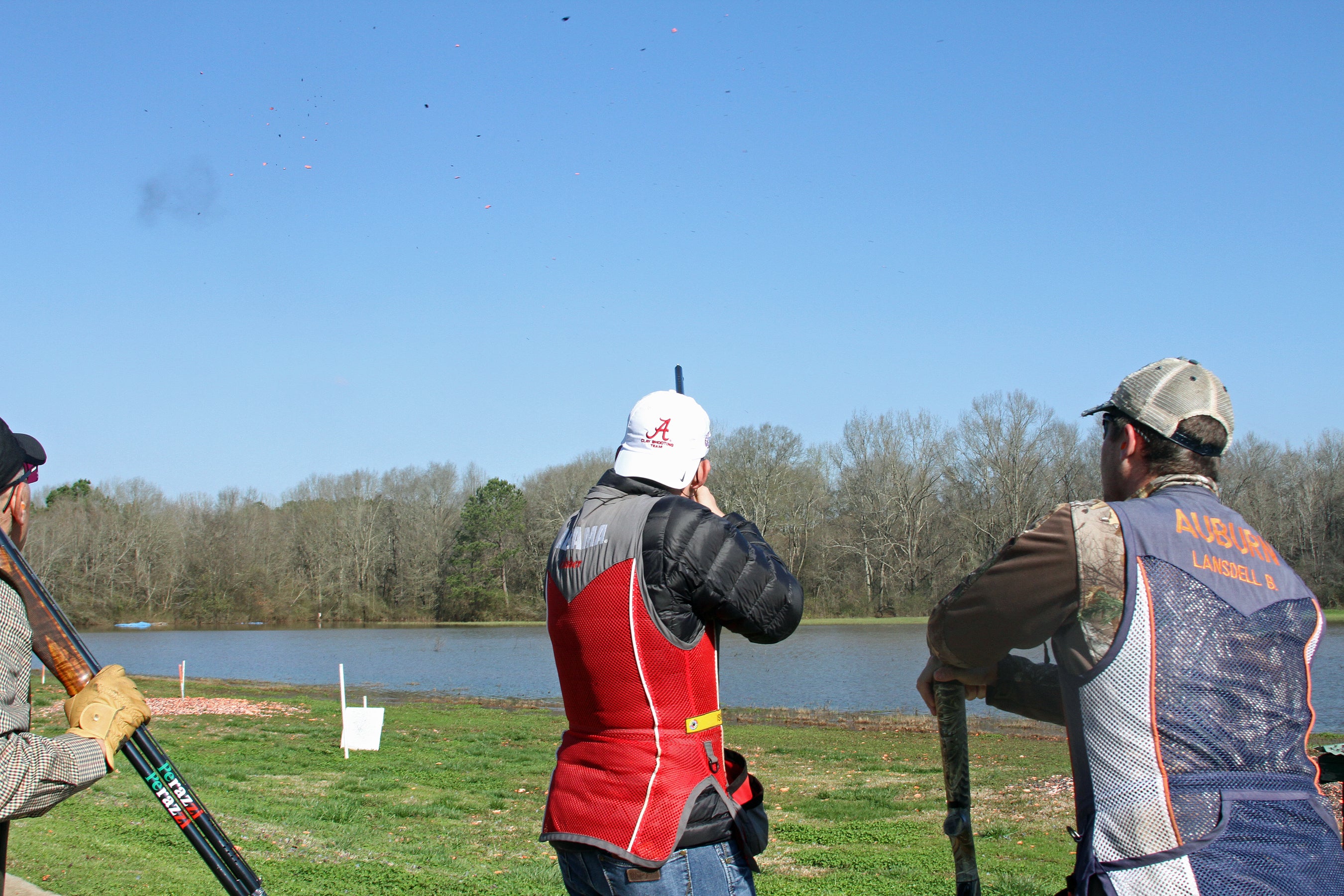By DAVID RAINER, Alabama Department of Conservation and Natural Resources
When the 200 shooters in the Alabama 4-H State Shotgun Championship arrive in April at the Red Eagle Skeet and Trap Club on the outskirts of Childersburg, Alabama, those participants will be able to compete at one of the top shotgun shooting facilities in the South.
Because of its long history of working with the Alabama Wildlife and Freshwater Fisheries (WFF) Division’s Hunter Safety Program, Red Eagle was able to partner with the Division to upgrade its facilities to international-level standards through the use of matching federal funds from the Pittman-Robertson Act.
For those not familiar with the Pittman-Robertson Act, it levies an excise tax on firearms, ammunition and hunting equipment. Funds from Pittman-Robertson go to states based on land mass and the number of hunting licenses sold. The funds are used for a variety of wildlife conservation efforts, hunter education and the development, maintenance and improvement to shooting ranges.
Red Eagle is a club open to the public with a mission of firearms safety and youth development. The facility is open to the public four days a week – Wednesday, Friday and Sunday from noon until 6 p.m. and Saturday from 9 a.m. to 6 p.m. Members have access to the facility seven days a week from 9 a.m. to 9 p.m.
Club Manager Tommy McGilberry said the club, formed in 1956, understands the contribution hunters make to the shooting sports, so they offer license holders a reduced fee structure due to this partnership with the Division.
“We let anyone who has an Alabama hunting license shoot here as a guest for only $1 more than members,” said McGilberry, who joined the club in 1974. “Members pay $5, and those with a hunting license pay $6. That’s quite an advantage for the people of Alabama to be able to come out here and shoot at a facility like this for a reasonable price.”
And for that low price, shooters can gain access to a world-class facility.
“Right now, we’re trying to come online with our bunker trap,” McGilberry said. “We’re trying to get the bunker dug to get that into operation. This will give somebody in Alabama the opportunity to start shooting in the 9th grade with the 4-H program and make it all the way to the Olympics with the equipment we have here. This will be the only place in Alabama with a bunker trap. The closest places now are Nashville, Fort Benning (Georgia) or Gainesville, Florida. Since we are centrally located, this will give Alabama a great asset for people to come here and shoot while they’re young.”
McGilberry, who served as a shooting coach in the U.S. Army and competed in international skeet from 1991 to 2003, said the shooting sports could be the perfect activity for those who don’t have the skills for other sports.
“All you have to have is hand-eye coordination and a place to practice,” he said. “If you’ve got the facility and you’ve got the talent, you can be an Olympian; you can be a champion.”
McGilberry was recruited by the Alabama Cooperative Extension Service to coordinate firearms safety instruction in the 4-H program. During McGilberry’s years, the program has expanded immensely from just firearms safety to intense competition. McGilberry worked with two interns during that process – Marisa Futral and Shannon Andress. Futral is now the Alabama WFF Hunter Education Coordinator and Andress is the coordinator for the Alabama 4-H Shooting Program.
Angus MacGreigor, an Alabama professor, coach of the Alabama Shotgun Shooting Team and competitor in international shooting, said the Pittman-Robertson funds have paid great dividends.
“As the 4-H program has grown, the club (Red Eagle) needed to grow as well,” MacGreigor said. “It needed to update its machinery so it could throw competition birds to train the shooters so they could go on to shoot the 4-H National Championships or for the Alabama or Auburn shooting teams or to shoot competitively around the world.”








